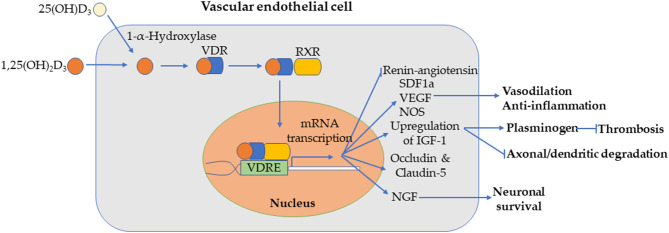Figure 1.
Combination of various proposed mechanisms in endothelial cells for vitamin D prevention/mitigation of ischemic stroke. 1,25(OH)2D3 [or 25(OH)D3D3, which is converted to of 1,25(OH)2D3 via 1-α-Hydroxylase] diffuses through the endothelial cell membrane, binds to vitamin D receptor (VDR), dimerizes with RXR, and translocates into the nucleus. The complex binds to VDRE for transcription of genes resulting in inhibition of renin-angiotensin and activation of SDF1a, VEGF, and NOS pathways for vasodilation and anti-inflammation; upregulation of IGF-1 (and thus neuroprotection of axon and dendrites and thrombolysis via plasminogen); expression of blood brain barrier (BBB) tight-junction proteins occludin and claudin-5; upregulation of nerve growth factor (NGF), which supports neuronal growth, maintenance, and survival.

